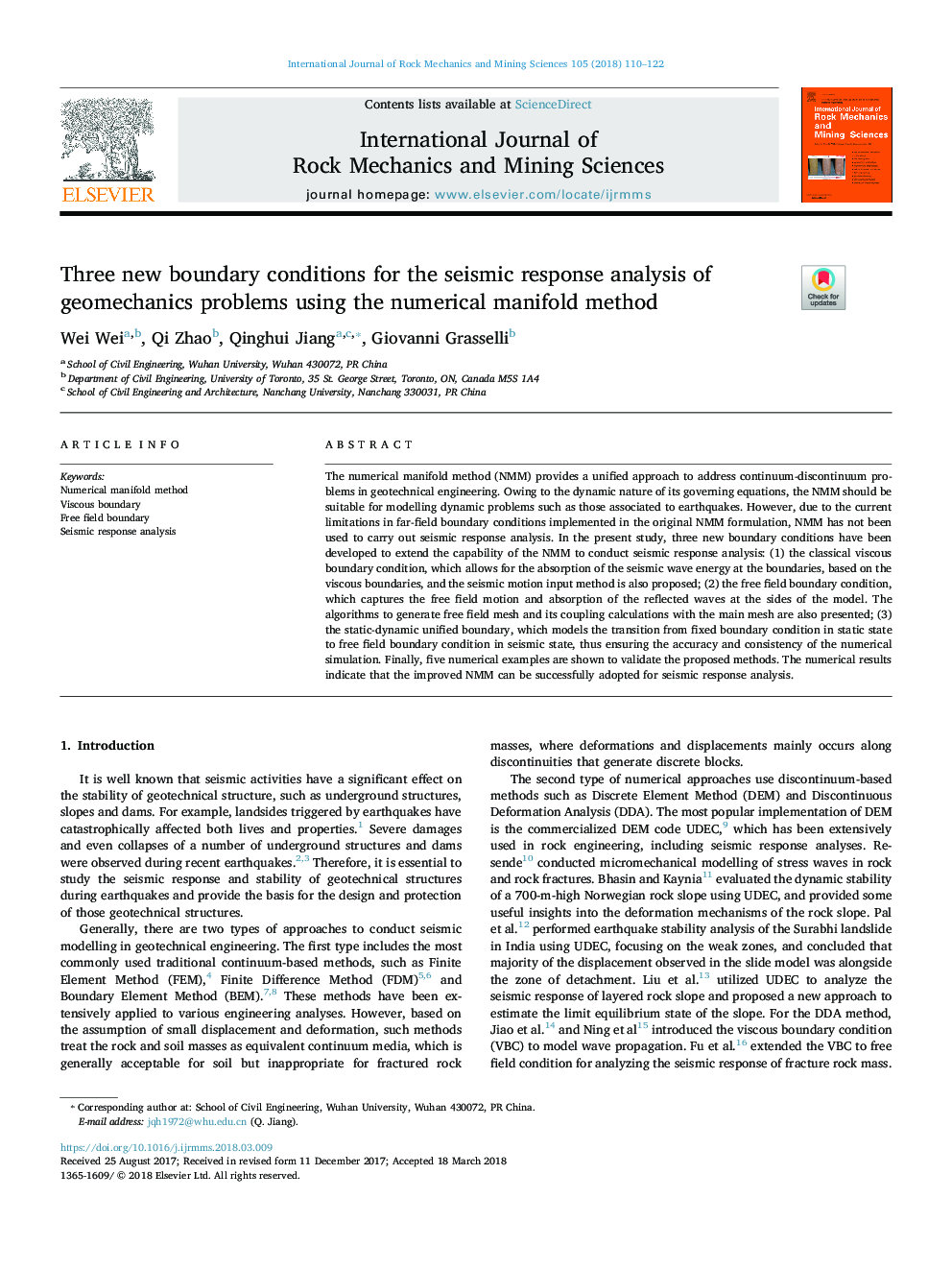| Article ID | Journal | Published Year | Pages | File Type |
|---|---|---|---|---|
| 7206267 | International Journal of Rock Mechanics and Mining Sciences | 2018 | 13 Pages |
Abstract
The numerical manifold method (NMM) provides a unified approach to address continuum-discontinuum problems in geotechnical engineering. Owing to the dynamic nature of its governing equations, the NMM should be suitable for modelling dynamic problems such as those associated to earthquakes. However, due to the current limitations in far-field boundary conditions implemented in the original NMM formulation, NMM has not been used to carry out seismic response analysis. In the present study, three new boundary conditions have been developed to extend the capability of the NMM to conduct seismic response analysis: (1) the classical viscous boundary condition, which allows for the absorption of the seismic wave energy at the boundaries, based on the viscous boundaries, and the seismic motion input method is also proposed; (2) the free field boundary condition, which captures the free field motion and absorption of the reflected waves at the sides of the model. The algorithms to generate free field mesh and its coupling calculations with the main mesh are also presented; (3) the static-dynamic unified boundary, which models the transition from fixed boundary condition in static state to free field boundary condition in seismic state, thus ensuring the accuracy and consistency of the numerical simulation. Finally, five numerical examples are shown to validate the proposed methods. The numerical results indicate that the improved NMM can be successfully adopted for seismic response analysis.
Related Topics
Physical Sciences and Engineering
Earth and Planetary Sciences
Geotechnical Engineering and Engineering Geology
Authors
Wei Wei, Qi Zhao, Qinghui Jiang, Giovanni Grasselli,
